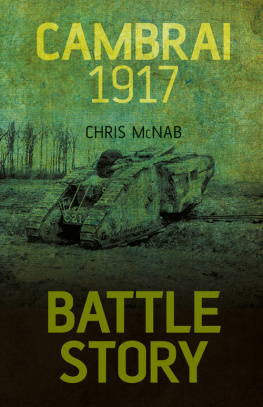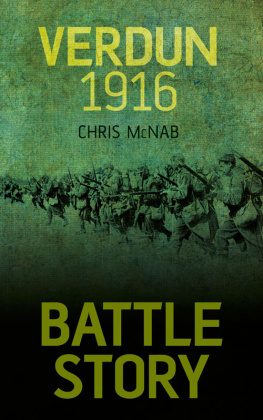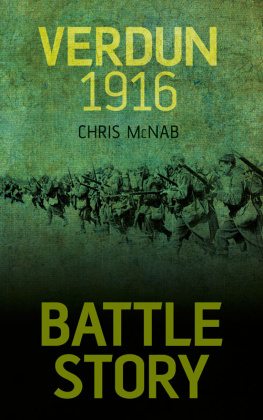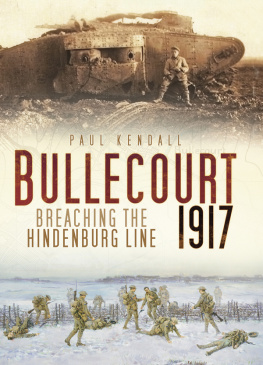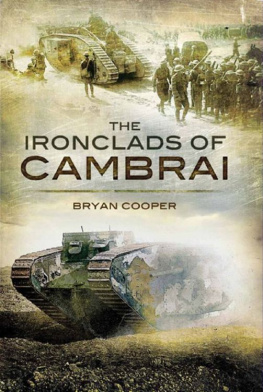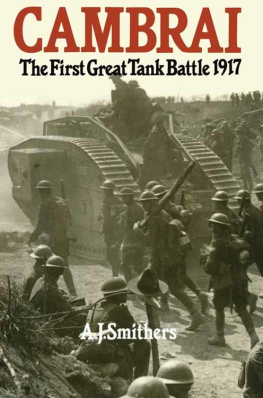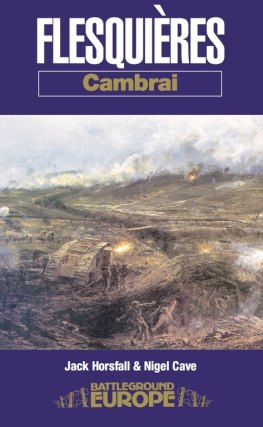I would like to thank Jo de Vries of The History Press for her professional support and friendship throughout this project, and my family for their forbearance during an unusually busy period of work.
As the Cambrai front fell into (relative) quiet, it was time for both sides to assess what they had achieved, and to draw appropriate lessons. The final butchers bill for the British from 20 November to 7 December was about 45,000 casualties, with nearly half of that figure being fatalities or missing. The Germans had suffered casualties on a similar scale.
For the British, both the public and the military command, Cambrai had gone from being a eulogised victory to a public embarrassment. How, it was asked, could a campaign that secured such decisive advances on the opening day, almost unprecedented in the war to date, thereafter unwind into attrition and withdrawal? At its high point, the British advance took it to the northern extremity of Bourlon Wood, 4 miles from the original jumping off point, the Hindenburg Line having been breached and the British troops penetrating the rearmost Siegfried II Line. Bourlon Wood, plus its neighbouring village and places such as Fontaine, Cantaing, Graincourt, Noyelles, Marcoing and Masnires had seen epic battles, and the sacrifice of tens of thousands of men. Yet all of these locations were eventually abandoned during the 6,000yd retreat back to the Flesquires Ridge Line. The British had still made distinct gains when their final position was compared to the original front lines, but the 2-mile final advance was poor comfort to planners who had originally envisioned taking Cambrai now well behind German lines and of making a fast cavalry advance deep into the enemy rear, possibly changing the fortunes of the entire Western Front campaign in the process. In addition, for a time during those first few days of fighting, it seemed that the British had indeed hit upon a new way of fighting that might signal an end to the bad old days of mass death for mere yards of gain, such as happened at the Somme and Ypres. Instead, the battle devolved into a familiar picture of trench-bound troops and stasis. What had gone wrong?
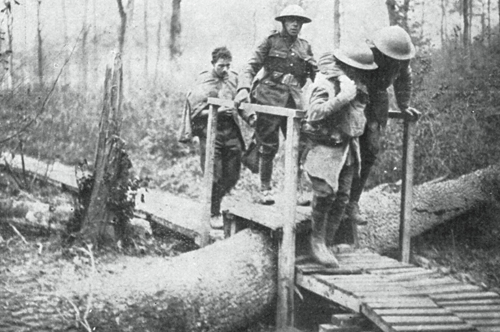
52. Despite the apparent success, both sides still felt the pain of heavy casualties after Cambrai. The Illustrated London News, 1 December 1917.
Investigation
Even as the battle-weary British troops, or their relief, settled into the Flesquires Ridge Line for the winter, the fire of disappointment in Britain was growing in heat and light. The War Cabinet wanted to find blame where it lay, and so ordered an official inquiry to be launched, headed by General Jan Smuts. Haig, Byng and others were now in the spotlight, and it was evidently not going to be a delicate study of failure.

53. Villagers are evacuated from Noyelles, escaping the heavy German machine-gun fire. The Illustrated London News, 1 December 1917.
One of the key questions of the inquiry was why the British had seemed so surprised by the powerful German counter-attack on 30 November. Indeed, intelligence suggested that the Germans had built up their manpower and artillery to levels that indicated an imminent push back, but there was a prevailing belief that the British offensive had exhausted the enemy and that he was in no fit state to deliver a coherent and major retaliation. Testimony from the GOC of the 12th Division, Major General A.B. Scott, for example, revealed that reports had reached divisional headquarters of preparatory activity going on behind enemy lines, but that these reports were classified as what Robert Woollcombe terms trench gossip.
Another question the inquiry attempted to answer was why there had been such a significant collapse of the III Corps and VII Corps troops on the right flank of the Cambrai front, despite the German attack in these areas being the weakest of the three prongs of advance. There were alarming tales of entire units dropping their weapons and simply sprinting for the rear, although as the narrative above has shown, there was plenty of determined resistance on 30 November as well. Furthermore, reinforcements and easily accessible reserves were not available to the frontline units, meaning that the brigade and divisional commanders were unable to stem the tide in some sectors.
The debate about the collapse of the British defence took an unpalatable turn during the proceedings, centred around the figure of General Byng. Leaving the staff and higher commanders relatively blameless, Byng focused instead on the quality and preparedness of the lower ranks. He judged that the British troops in this sector were of adequate strength, but that a lack of training accounted for their poor showing. Furthermore, he argued that the Machine Gun Corps had not exhibited staunchness and that, had the troops been of sufficient quality, the German breakthrough would not have occurred.
This explanation was accepted by many within the British media, government and military. Ironically, it was Haig himself who came to the defence of the lower ranks. Popular representations of Haig tend to portray him as an imperious figure, distant from the mud-drenched concerns of the man at the frontline. His explanation for the failure to predict and stop the counter-attack, however, has a rather humble humanity:
Whatever view may be held on the foregoing [the criticisms of the lower ranks], I feel, after careful consideration that all blame for the mishap must rest on my shoulders. It was I who decided on the 22nd that Bourlon Wood should be attacked The occupation of this position at once increased our front and threw extra work on our troops. As events on the 30th show, many of the men were very tired and unable to resist the enemys blow, as I believe they could have done had they been fresher.
National Archives, WO 158/52
In this passage, Haig acknowledges that all men have limits to what they can be expected to achieve, and that many of his troops had reached those limits. Furthermore, there is an implicit recognition of strategic mistakes. Byng himself had been concerned about Bourlon Wood as an early objective of the campaign, and in many ways it does appear to be a bridge too far. Haig also went on to acknowledge that in certain sectors the British troops were simply faced with an enemy numerically too strong to resist, and that the rearward flow of retreating infantry probably prevented the British machine-gunners from gaining a clear line of fire on their enemy.
Despite this reappraisal, the investigations of late 1917 and early 1918 still largely put the responsibility for the collapse, if not the blame, at the door of those on the frontline. It would remain until the late 1940s for something better approaching the truth to emerge, in the form of the Official History of the Cambrai campaign. Detailed research showed that there had been a singular failure amongst the British senior commanders to take the possibility of a German counter-attack seriously, despite the fact that previous experience and current intelligence suggested such an attack was a virtual certainty. Exhausted and understrength battalions were therefore kept in the line when they should have been relieved or reinforced. The British commanders should have made ready for a defence, but chose not to do so. Also, the German ability to reinforce a threatened sector heavily and quickly was known to the British staff, hence the initial decision to limit the offensive to a forty-eight-hour period of action. Haigs decision to keep the campaign going forward after 21 November is therefore open to question; any extension of the offensive was likely to turn a fast strike into a prolonged grinding match.

